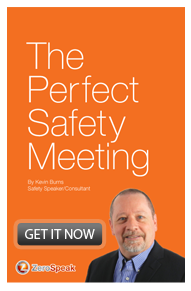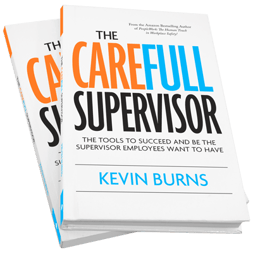There is a people problem in safety, a mindset problem in safety and a decision-making problem in safety.

Four workers were attempting to lift the fourth wall into place on a home construction project. The wall was too heavy for the four to lift and so three let go crushing the fourth under the weight. The worker died.
Two houses going up across the street from each other. On the roof of one house, the roofers are tied-off. On the house across the street, the roofers are not tied-off.
A worker speeds to work on an icy, snow-covered street with side and rear windows and tail-lights all obscured by heavy snow. The front windshield has only a small viewing opening created by the windshield wipers. After blasting through a yellow light in a busy intersection and turning left into a parking lot, he emerges from his car in full PPE: hard hat, glasses, coveralls and steel-toed boots.
Safety isn’t a process problem. It’s a people problem.
But safety insists on only addressing the process part. But that’s not where the problem exists. In each example above, a decision was made to proceed anyway - regardless of the process. Truthfully, if it were only a process problem, and the processes were standardized (also known as best practices) then why is not every workplace at Zero? The answer: people.
That’s the differentiator. The same processes employed in multiple workplaces gets as many varying results as there are groups of people. In the same way that incentives might seem to work in some places but not others, the differentiator is people.
Safety people don’t want to hear that because safety people have been schooled, trained, tested and certified in processes - not people. In fact, at no time in history have there been more certified safety professionals in the marketplace than today. Never before, have there been better processes for keeping people safe. Never before has there been more education, and meetings, and talks, and reminders, and marketing, and advertising and training in safety. And yet, the numbers of workplace incidents are rising.
Safety Needs To Get Personal
There is a people problem in safety. There is a mindset problem in safety. There is a decision-making problem in safety. None of it is fixed by a better process. Process doesn’t fix people. Process fixes process. People fix people.
Safety needs to get personal: appealing to the personal values, the personal attitudes and the personal belief systems of every single worker on every single work site in every single organization. That won’t happen by acquiescing to assumptions.
Here are a few assumptions that need to be addressed if you want to get your people to buy-in to safety:
1If they wear their PPE they stand a better chance of staying safe - If they wear their PPE they only stand a better chance of being in compliance, but that is no guarantee of being safe. The example above of the winter driver shows that they may dress safe, but that doesn’t mean they believe in safety. Don’t let PPE compliance lead your people into a false sense of security about their safety. Safety gear won’t save you - safety attitude will.
2All workers want to be safe on the job - The evidence contradicts that. The example above of non-complying roofers shows that they may want to work - but not necessarily safely. If a worker chooses (and every decision is a choice) to ignore safety regs, you must drill down and get to the “why” of the issue. It may boil down to simply being too lazy to do the extra work to be safe. Get rid of laziness from a work site pronto.
3Regular safety meetings improve safety uptake - There are two kinds of meetings: those with active participants and those with spectators. If you’re not testing your people on what you’re teaching them, if you’re not placing expectations to write down the information and learn it, retain it and own it, then you have a crew of spectators - trying to sit through a bad movie until the end. The information is useless unless it is retained, no matter how many meetings you have.
Safety processes only work when you engage the hearts and minds of the people you are trying to protect. They have got to be as vigilant about safety as you are about getting them to comply with safety. Compliance is not safety - it is process. It is not personal. It does not appeal to their values, their attitudes or their belief systems.
If you want them to buy-in to safety, workers are going to need more than “because it’s in the rule book.” Get personal. Face-to-face, one-on-one: that’s how safety gets buy-in.
Your safety meetings are one of the best, most efficient ways to help people buy-in to safety all together and in a short period of time. Download my free e-book, "The Perfect Safety Meeting" to get started or talk to me about the consulting services I offer in helping build better safety meetings.



